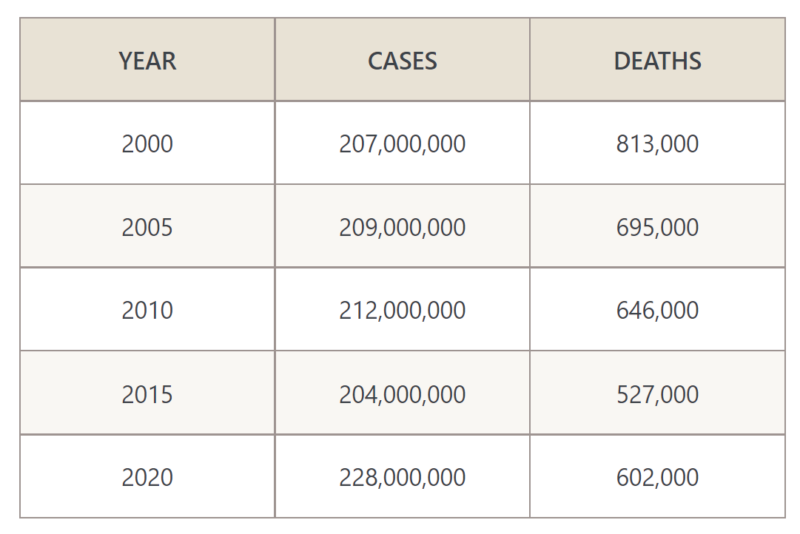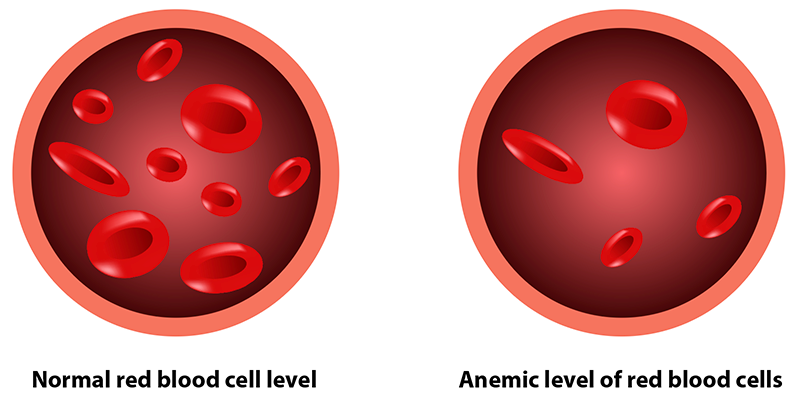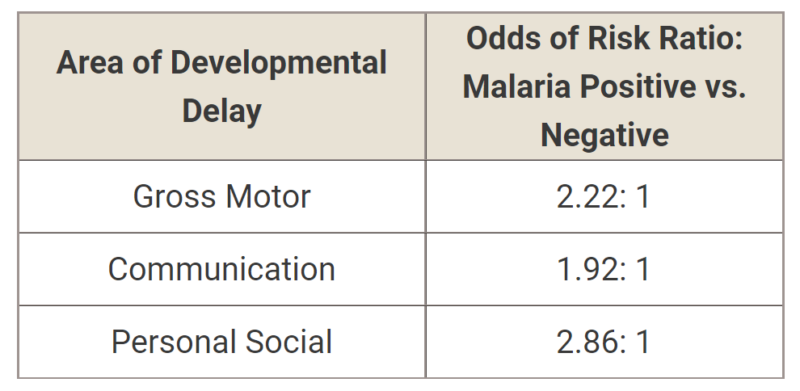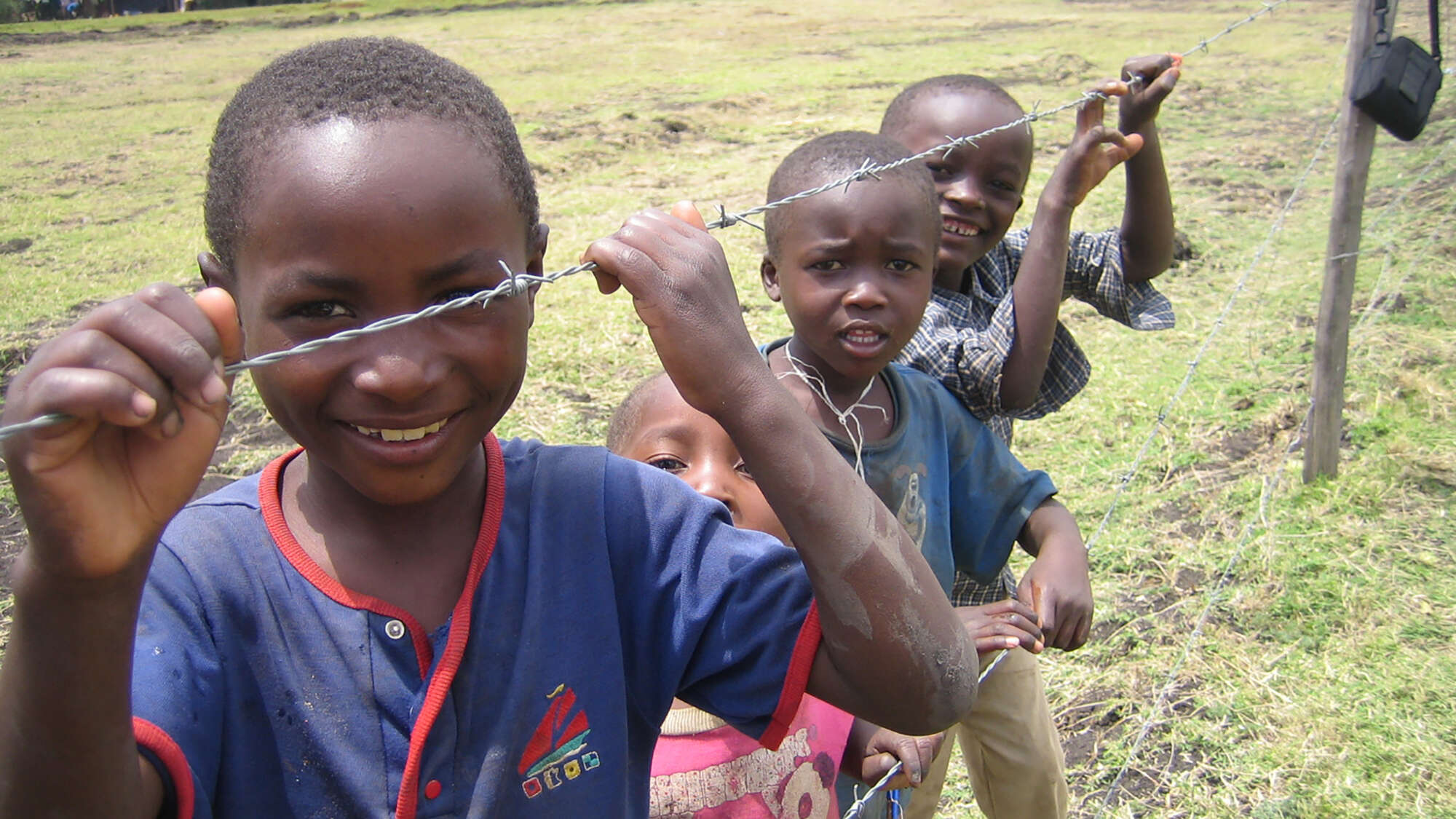The impacts of severe malaria cases on children are well documented, but the effects of mild infections on child development are less understood.
The statistics surrounding malaria mortality and the susceptibility of children to severe malaria infection are well known in Public Health circles. According to the World Health Organization (WHO), malaria claimed an estimated 627,000 lives in 2020, the vast majority of those in the WHO African Region. In 2020, the region accounted for a 95% of all malaria cases and 96% of malaria deaths, with children under the age of five making up 80% of the fallen.1

Source: World Health Organization
Concerted efforts stemming from public and private partnerships have made significant progress in the past two decades. Efforts to fund vector control interventions along with the development and dissemination of anti-malarial drugs have brought malaria deaths in Africa down by about 26% since the turn of the century. But in recent years, that number has been trending in the wrong direction. After achieving a 35% reduction in malaria deaths by 2015, deaths in Africa have since increased every year.2
Moreover, despite the progress (and subsequent regression) in malaria deaths, the rate of malaria incidence in the region is even less encouraging. While fewer children are dying from malaria now than 20 years ago, the number of malaria cases both globally and in the Africa region are higher than ever before. WHO estimates there were 228 million cases of malaria in Africa in 2020, up more than 20 million cases from two decades prior (see Table 1).
A Combination of Factors
This disturbing trend is at the center of an emerging area of research. Given the magnitude of the malaria problem, the impacts of severe cases of malaria on life expectancy and quality of life have been the subject of countless studies. But the risks associated with milder cases of malaria – particularly as it relates to childhood development – are far less understood. As our knowledge of the mechanisms that govern childhood development increases, the disproportionate amount of children afflicted by malaria has led researchers to begin investigating the impact of less severe malaria infections over time. Quantifying these impacts, however, poses a whole new set of challenges.
Just as childhood development is subject to a long list of variables ranging from socio-economic status to malnutrition, malaria incidence in humans is not only determined by the presence of Plasmodium parasites. There is a complex interplay among biological and environmental factors that combine to manifest as risk. Children of low-income families, for example, may suffer from malnutrition and weakened immune systems. They may lack proper shelter or access to important medical and educational resources – all dynamics that contribute to the prevalence of malaria and numerous other diseases. How much risk to assign to one variable or another has long been the source of debate.
Add to the equation that any attempt to quantify malaria impacts must also consider temporal variables surrounding each individual: How many times has a child been infected with malaria? Was the child subjected to a prenatal malaria infection? How severe were prior infections and/or symptoms?
Now try to account for practical matters such as the amount of time between the onset of an infection and an outcome assessment, or the education level of parents (their ability to respond accurately and/or characterize their child’s history or symptoms), even the language or format of an assessment.3 All of these factors have a bearing on what is being studied and what conclusions can be drawn.
As a consequence, Public Health researchers caution that studies surrounding long-term impacts of mild malarial infections among children may only provide directional results. But one thing is certain: developmental delays in early childhood have a direct link to realizing potential in adult life.4
On average, developmental delays during early childhood are associated with poorer schooling outcomes, lower incomes, and substantially higher risks of ill-health during adult life.
Gunther Fink et al. Harvard T.H. Chan School of Public Health, 2013
Understanding the Infection
A discussion surrounding the potential impact of malaria infection on child development should begin with the mechanisms of the infection itself. Malaria parasites invade, and multiply within, the red blood cells of their human hosts. This infection causes structural and functional changes in host cells, which are ultimately destroyed. Severe infections may evolve into severe anemia and/or cerebral malaria. Children are particularly susceptible because they have yet to develop immunity. While infected adults may experience a range of symptoms, including fever, chills, headache, muscle aches, lethargy, nausea, vomiting, and diarrhea; the infection may ravage a child’s system. If left untreated for 24 hours, it is an infection that may lead to death.

Even when treated, in the short-term, malaria infection has been observed to affect language, motor skills, memory, and attention. The compromised red blood cells undermine the body’s ability to deliver oxygen to the brain as well as to other organs and tissues. In the most serious cases, cerebral malaria (severe swelling) may occur when parasite infected cells clog the tiny blood vessels in the brain. This is one of the primary complications associated with malaria death.
It is here that the link between child development is even more fundamental and compelling. Red blood cells contain hemoglobin, which accounts for most of the body’s iron. In the past two decades, a growing body of research indicates that iron deficiency in young children can significantly impair child development.5 It is this causal relationship which led researchers to assess the affects of malaria on the same.
Critical Development Years: Research
A group from the Harvard T.H. Chan School of Public Health may have been the first to tackle this complex challenge head on. In a study published in the Malaria Journal in 2013, the team evaluated a population of children in Zambia using malaria prevalence data by geography. The study found higher rates of stunted growth and lower body weight in rural regions with a high prevalence of malaria as compared to low-prevalence urban areas, as well as lower scores on fine motor skill assessments.6
A study published in the February 2020 edition of the International Journal of Environmental Research and Public Health explored this dynamic further8. Using data collected in western Kenya between 2012 and 2016, the study investigated the association between malaria infection and child development as well as looking specifically at anemia as a potential agent. The research tested hypotheses that the odds of delay in 1) gross motor skills, 2) communication, and 3) personal social development increased with malaria infection and that anemia (hemoglobin content) played a significant role.
In this study, researchers collected blood samples and administered a health survey to a population of children within a malaria-endemic region of the country. Socio-demographic information such as household wealth and maternal education, as well as nutrition intervention information, was analyzed as possible determinants in results. A few months later, caregivers brought the study children to a central location for main trial data collection. Using the Extended Ages and Stages Questionnaire (EASQ), a modified version of the Ages and Stages Questionnaire (ASQ) which is widely used for the developmental screening of children under five years of age, researchers measured developmental outcomes of each child. A final sample size of 592 children were included in the study, and children who scored in the lowest 25% on the EASQ scale were considered at risk for developmental delays.

Association Between Risk for Developmental Delays and Malaria Infection*
*Confidence Interval 95%
Adapted from: Association between Malaria Infection and Early Childhood Development Mediated by Anemia in Rural Kenya. Milner et al., Int J Environ Res Public Health. 2020 Feb 2.
The results of the trial were telling. Of the sample population, 18% (109) of the children tested positive for malaria, indicating they had been infected by a malarial parasite within one month prior to having their blood drawn. EASQ scale results show that the children who tested positive for malaria were between two and three times as likely to experience developmental delays in each of the three areas studied (see Table 2). Results layering in anemia and nutritional intervention data were deemed significant, if not statistically different, than the malaria indicator.
Implications in 2022 and Beyond
As research in this area continues to evolve, the implications of digressing malaria eradication efforts become more pronounced. Not only are malaria incidence and malaria mortality on the rise, but the effectiveness of primary vector control methods and antimalarial drugs are waning. According to a 2021 report published in eLife, Anopheles resistance to at least one class of adulticides is reported in 90% of malaria-endemic countries, with 32% of the malaria-endemic countries reporting resistance to all four classes of mosquito insecticides (pyrethroids, carbamates, organophosphates, and organochlorines).7
Those are staggering numbers. Perhaps no less staggering than the hundreds of millions afflicted by malaria each year, or the malaria survivors who carry the effects of a childhood infection throughout their adult life.
1. https://www.who.int/news-room/fact-sheets/detail/malaria
2. WHO 2021 World Malaria Report
3. Fink, G., Olgiati, A., Hawela, M. et al. Association between early childhood exposure to malaria and children’s pre-school development: evidence from the Zambia early childhood development project. Malar J 12, 12 (2013). https://doi.org/10.1186/1475-2875-12-12
4. Maureen Black et al, Early childhood development coming of age: science through the life course. Lancet. 2017 Jan 7;389(10064):77-90. doi: 10.1016/S0140-6736(16)31389-7
5. Lozoff B. Iron deficiency and child development. Food Nutr Bull. 2007 Dec;28(4 Suppl):S560-71. doi: 10.1177/15648265070284S409. PMID: 18297894.
6. Fink, Malaria Journal
7. Alice Namias, Ndey Bassin Jobe, Krijn Petrus Paaijmans, Silvie Huijben (2021) The need for practical insecticide-resistance guidelines to effectively inform mosquito-borne disease control programs eLife https://doi.org/10.7554/eLife.65655
8. Milner EM, Kariger P, Pickering AJ, Stewart CP, Byrd K, Lin A, Rao G, Achando B, Dentz HN, Null C, Fernald LCH. Association between Malaria Infection and Early Childhood Development Mediated by Anemia in Rural Kenya. International Journal of Environmental Research and Public Health. 2020; 17(3):902. https://doi.org/10.3390/ijerph17030902
